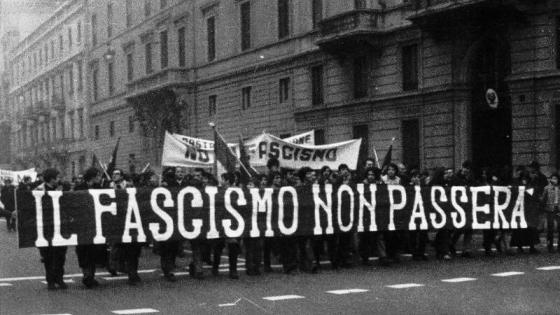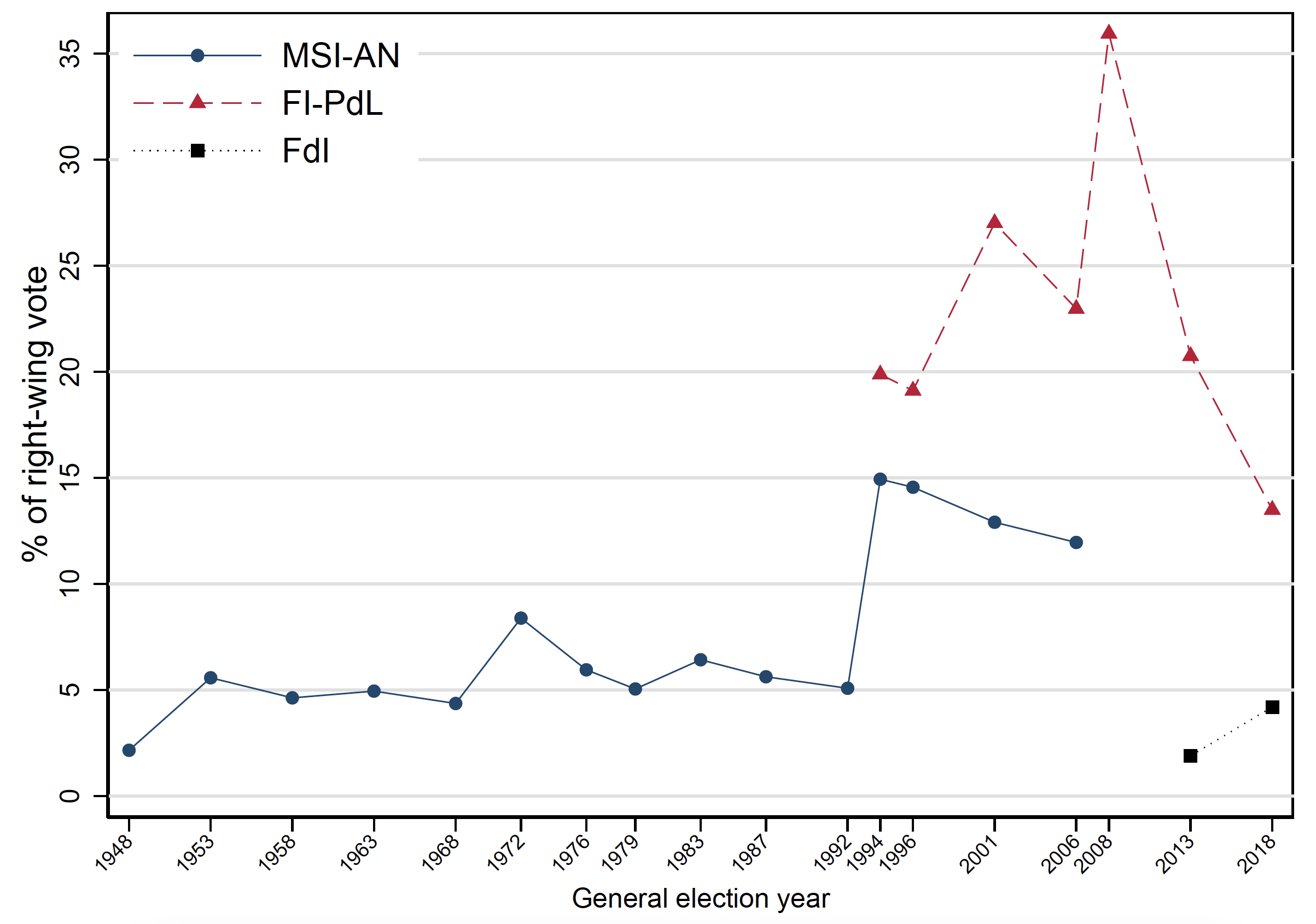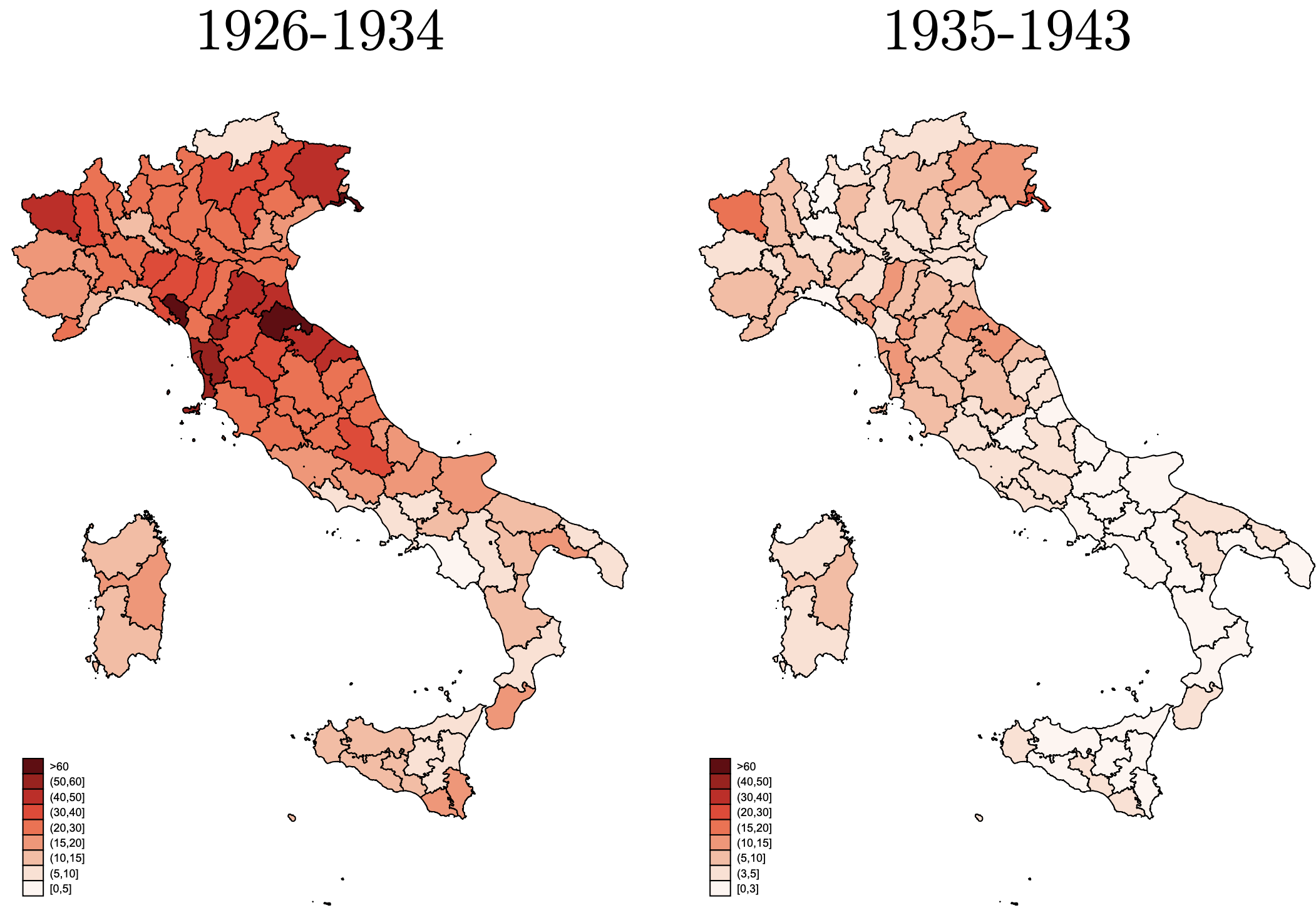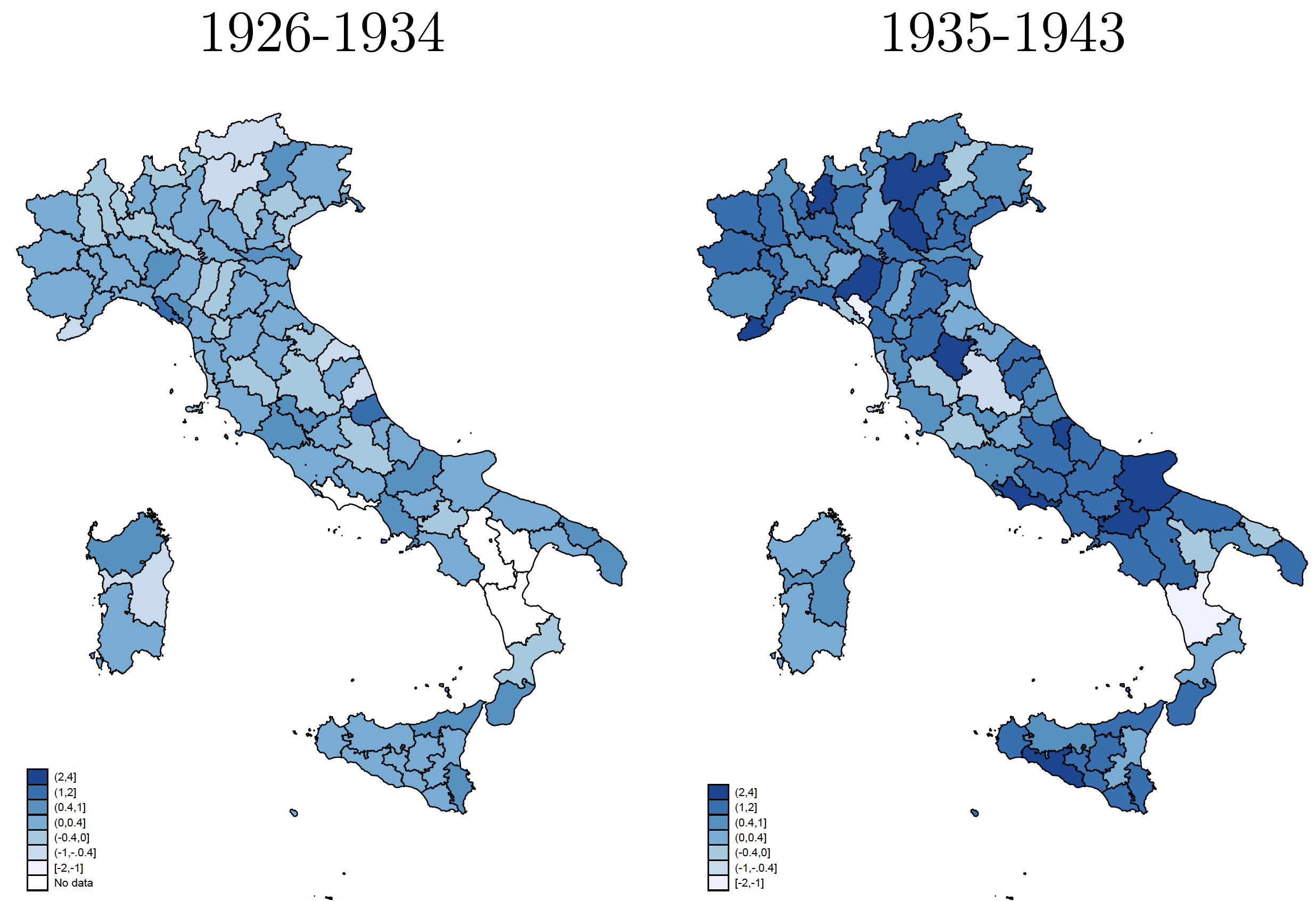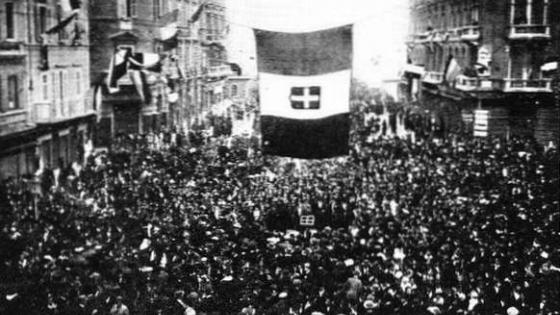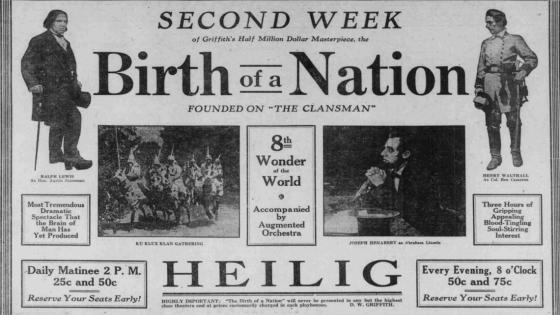Recent years have seen the resurgence of political parties embracing far-right ideologies (see e.g. Barros and Silva 2020), and Italy has been part of this global trend. In fact, one of the leading players in the run-up to the general elections held yesterday (25 September 2022) was Fratelli d’Italia, a political party whose leaders never explicitly repudiated the historical experience of fascism, and whose emblem – the Tricolore Flame – is identical to those used by the Movimento Social Italiano (MSI), the party that sprung from the dissolved Partito Nazionale Fascista (PNF), as well as the Alleanza Nazionale (AN), the post-1992 mainstream evolution of MSI (De Giorgi and Tronconi 2018).
In a recent paper, we use historical data to investigate the empirical factors shaping voting behaviour in Italy from 1948 to 2018, focusing on the role played by historical resistance to fascism. Unlike the existing literature, which emphasises positive historical determinants of support for right-wing ideologies, we show that stronger opposition to the fascist regime during Mussolini’s dictatorship negatively affects political preferences for right-wing parties in the present. Specifically, we estimate that one additional opponent per 10,000 adults in a province reduces the vote shares of the MSI and AN by between 0.3 and 1.2 percentage points (between 3% and 13% of these parties’ vote shares).
The fall of the right in Italian politics, and its return
After the collapse of fascism, Italian voters distanced themselves from the right. For almost 50 years since the end of WWII, the lone definitively right-wing Italian political party, the MSI, collected only a small share of votes in all post-war elections. However, this situation changed dramatically after 1992, when the old party system collapsed and the MSI gained ‘legitimacy’ by joining a coalition led by Berlusconi’s Forza Italia (FI) movement in the run-up to the 1994 general election. Such endorsement involved an identity transformation: the MSI was dissolved into a less ideologically distinctive Alleanza Nazionale, which committed to the principles of liberal democracies (Bull and Newell 2005).
AN’s shift to the ideological centre made it the first party since WWII with roots in interwar-era fascism to achieve a place in government. Subsequently, AN merged into Popolo delle Liberta’ (PdL), and when PdL was dissolved in 2013, the right-wing baton was taken by a small new party named Fratelli d’Italia (FdI). Polls for the 25 September Italian general elections predicted that FdI would collect as much as 25% of the vote. Figure 1 illustrates the political support for right-wing parties in Italy from 1948 to 2018.
Figure 1
Note: This Figure reports the share of votes obtained in Italian general elections (Lower House) by the right-wing post-fascist party (Movimento Sociale Italiano until 1992, Alleanza Nazionale from 1994 to 2006), by the more mainstream conservative right-wing party (Forza Italia between 1994 and 2006 and since 2013), and by the right-wing populist party (Fratelli d’Italia since the 2013 general election).
Source: Italian Ministry of the Interior.
The persistence of fascist ideology
Italy’s legacy is not unique: historical experiences with fascism reverberate throughout Europe. For instance, German municipalities that supported the Nazi party are more likely to vote for populist right-wing parties today (Cantoni et al. 2017 and 2020). In Austria, Nazi elites who fled the Soviets after WWII established local party branches that preserved far-right ideologies (Ochsner and Roesel 2020). And the foundation of New Towns before WWII affects political attitudes in democratic Italy (Carillo 2022).
While these papers emphasise positive historical determinants of support for right-wing ideologies in democratic elections, we study negative historical determinants; namely, the experience of anti-fascism. To do this, we use newly digitised historical data to explore the link between anti-fascist movements in Italy from 1926–1943 and the support for post-fascist parties in democratic elections after WWII.
A measure of opposition during the Mussolini’s regime
We construct a novel measure of anti-fascism from individual level information on the universe of opponents to the fascist regime recorded in the “Casellario Politico Centrale’’ (CP), a catalogue instituted in 1894 to monitor subversive individuals (Tosatti 1997, 2011) and used intensively during Mussolini’s dictatorship for keeping track of political opponents. The introduction of the “Leggi fascistissime” in 1926 made any form of opposition to the regime unlawful (Dal Pont and Carolini 1980); this included members of illegal political parties (communists, socialists, etc.) and, more broadly, dissidents who opposed the regime but did not belong to any notable political group. Figure 2 depicts the provincial distribution of opponents during the first and second halves of the fascist regime (1926–1943).
Figure 2
Note: This Figure reports the opposition rate to fascism across Italian provinces (1936 boundaries) in 1926–1934 (left) and 1935–1943 (right), defined as the number of new individuals recorded in the Casellario Politico Centrale per 10,000 adults in a province.
The role of repression
Created by the regime in 1926, the “Tribunale speciale per la difesa dello Stato” (TS) was given jurisdiction to punish some of the most dangerous opponents to the regime. Sandro Pertini (head of the Italian Socialist Party) and Antonio Gramsci (head of the Italian Communist Party), to name just a few, both stood trial before the TS. In total, 6,929 of the 101,270 opponents recorded in the CP between 1926 and 1943 ended up in front of the TS.
The TS had the same structure as a military court: a panel composed of a president, appointed by the Minister of War, and five other judges (plus three substitutes). We leverage the random assignment of these judges to each case, focusing on the random panel’s propensity to impose heavier or lighter sentences across similar cases. Such a ‘judge stringency’ measure was pioneered by Kling (2006) and Sunstein et al. (2006). For each case, we impute the toughness of the sentence on all of the panel’s six judges; this is then averaged for each judge across all cases heard by the judge to create a measure of stringency for individual judges. Figure 3 reports the weighted average of judge stringency experienced by TS defendants born in each province, from 1929–1934 and 1935–1943.
Figure 3
Note: This Figure reports the weighted average of residual judge stringency across Italian provinces (1936 boundaries) in 1926–1934 (left chart) and 1935–1943 (right chart), with weights given by the frequency distribution of judges across cases involving defendants born in each province, computed from data on the universe of sentences of the Tribunale Speciale per la difesa dello Stato.
Source: Authors’ calculations based on data from the Military Library of the Italian Ministry of Defence.
As we can see from Figures 2 and 3, opposition to the fascist regime was weaker in the 1935–1943 period where regime opponents were tried by more severe judges in the preceding period (1926–1934). This is consistent with the idea that past sentences influence expectations about future sentences via social learning. We confirm in our regression analysis that the decision to become an active anti-fascist in 1935–1943 varies across provinces because of the punishment inflicted by TS judges on anti-fascists in 1926–1934.
Anti-fascism and voting behaviour
Did historical resistance to fascism work to dampen support for right-wing political parties decades later?
To answer this question, we use post-war election data that is publicly available from the Eligendo archive maintained by the Italian Ministry of the Interior. We base our analysis on the parties with a direct lineage to the PNF.
Our estimates indicate that one additional regime opponent every 10,000 adults in a province in 1935–1943 decreases the support for MSI by about 0.3 % in the 1948 election, which is about 13% of its vote share in that year. We find similar results in the 1976 election, where the effect is 0.7 percentage points, also about 13% of MSI’s share. Overall, opposition to the regime reduces the vote shares of the MSI and AN by between 0.3 and 1.2 percentage points (between 3% and 13% of these parties’ vote shares).
In the past decade, leaders of far-right movements have understood the importance of political appeal in a democracy. Riding the wave of populism, they adopted a more liberal appearance, shifting toward a populist platform. This shift legitimises a democratic vote while appealing to party cadres and voters whose ideological stance is still in line with the old post-fascist values. Does this shift towards populism allow new right-wing parties, like Fratelli D’Italia, to avoid historical anti-fascism sentiment and gain more political support? Using the example of Fratelli D’Italia in recent elections, we extended our analysis to parties that fit a broader definition of right-wing. Our results show a tenuous connection between ideological voting and populist voting. Hence, the strategy to embrace a more populist platform diminishes the negative impact that historical anti-fascist sentiment can have on voting behaviour for these parties.
Conclusions
Modern right-wing platforms may have reduced appeal among voters who are currently connected to an anti-fascist tradition that was violently repressed. A similar force might be at play in places were dictatorships with different ideological roots than fascism have repressed political dissent. One may wonder whether there is a parallel between the strength of right-wing parties in Eastern European countries during the past two decades and the strength of left-wing parties in post WWII Western-European countries that experienced fascist rule. The political consequences of such a historical experience may still affect public policy today.
References
Barros, L and M S Silva (2020), “Right-wing populism in the tropics: The rise of Jair Bolsonaro”, VoxEU.org, 24 January.
Bull, M J and J L Newell (2005), Italian politics: Adjustment under duress, Polity Press.
Cantoni, D, F Hagemeister F and M Westcott (2017), “Explaining the Alternative für Deutschland party’s electoral success: The shadow of Nazi voting”, VoxEU.org, 18 September.
Cantoni, D, F Hagemeister and M Westcott (2020), “Persistence and Activation of Right-Wing Political Ideology”, Rationality & Competition, Discussion Paper No. 143.
Carillo, M F (2022), “Fascistville: Mussolini's New Towns and the Persistence of Neo- Fascism”, Journal of Economic Growth, 1–41.
Dal Pont, A and S Carolini (1980), L’Italia dissidente e antifascista: le ordinanze, le sentenze istruttorie e le sentenze in Camera di consiglio emesse dal Tribunale speciale fascista contro gli imputati di antifascismo dall’anno 1927 al 1943, vol. 2. La pietra.
De Giorgi, E and F Tronconi (2018), “The center-right in a search for unity and the re-emergence of the neo-fascist right”, Contemporary Italian Politics 10(4): 330–345.
Kling, J R (2006), “Incarceration length, employment, and earnings”, American Economic Review 96(3): 863–876.
Ochsner, C and F Roesel (2020), “Migrating Extremists”, Economic Journal 130(628): 1135–1172.
Sunstein, C R, D Schkade, L M Ellman and A Sawicki (2006), Are Judges Political?: An empirical analysis of the federal judiciary, Brookings Institution Press.
Tosatti, G (1997), “La repressione del dissenso politico tra l’etá liberale e il fascismo. L’organizzazione della polizia”, Studi storici, 38(1): 217–255.
Tosatti, G (2011), “Pericolosi per la sicurezza dello Stato: le schedature della polizia tra periferia e centro”, Percorsi Storici.
